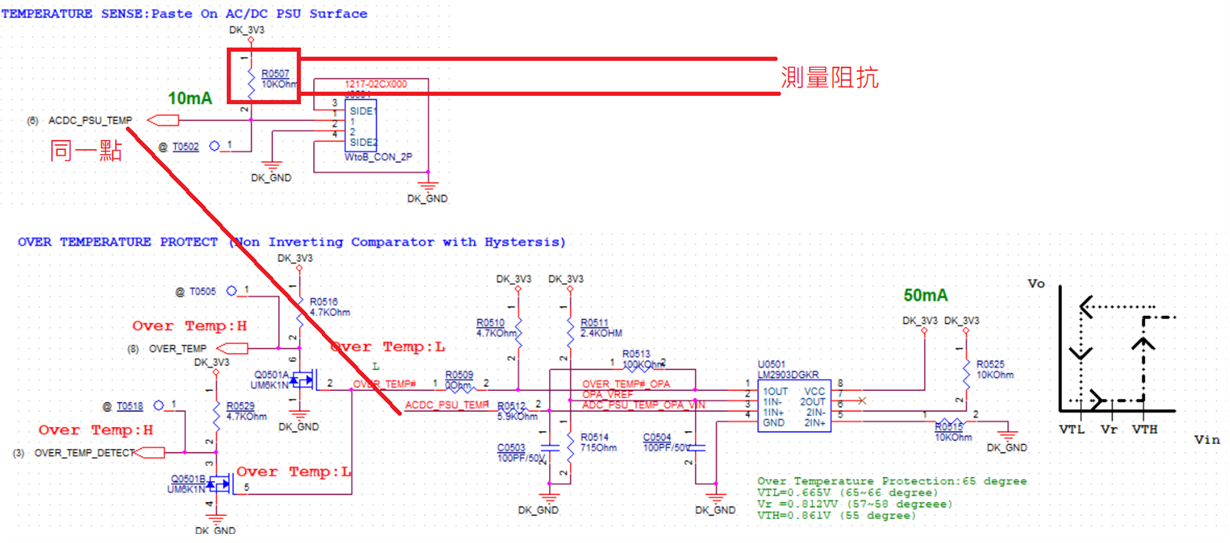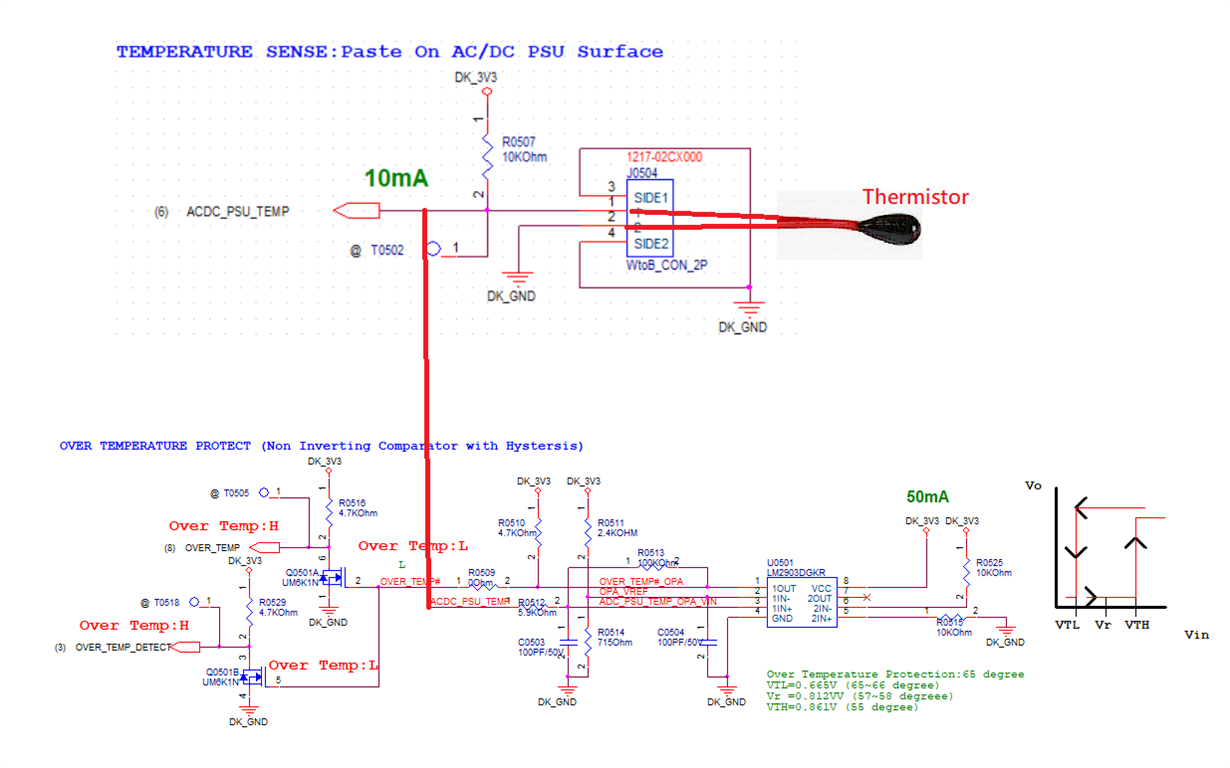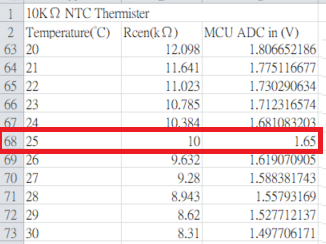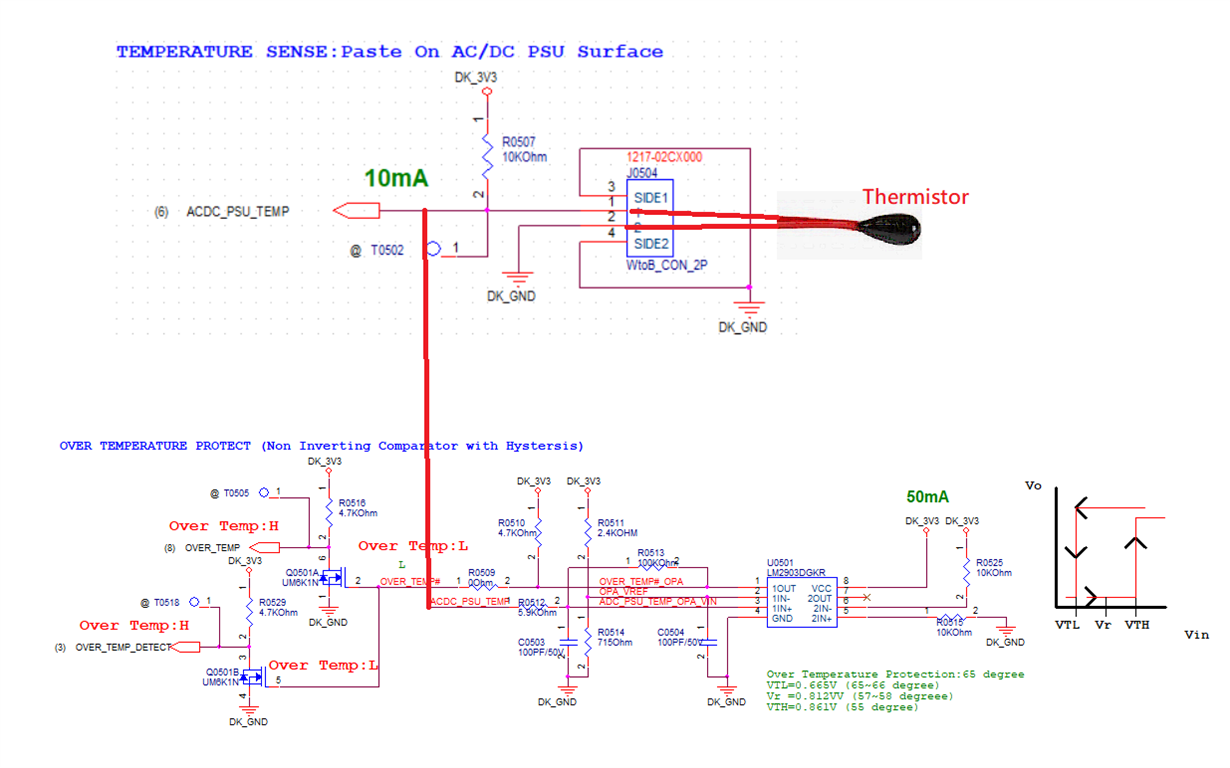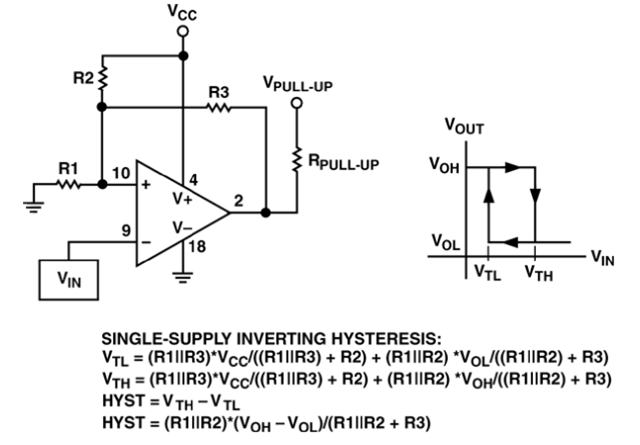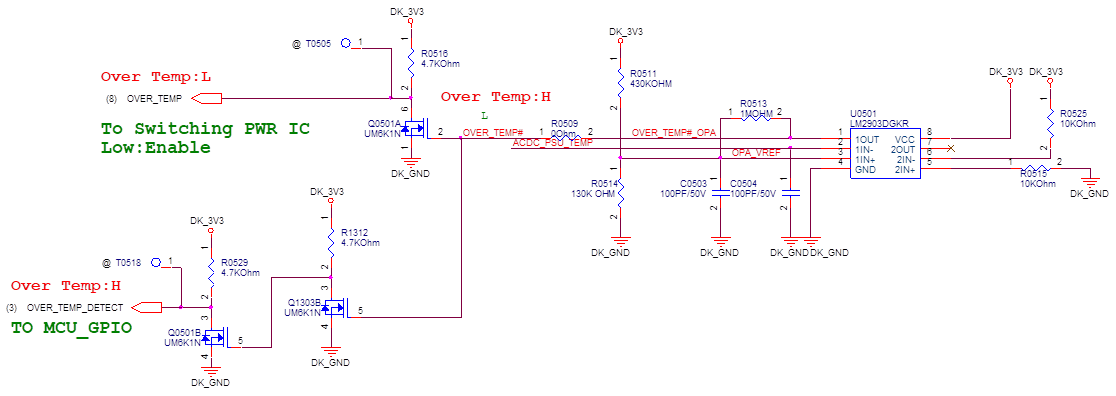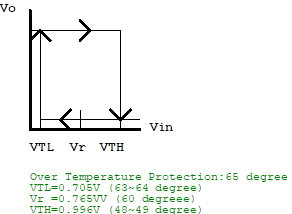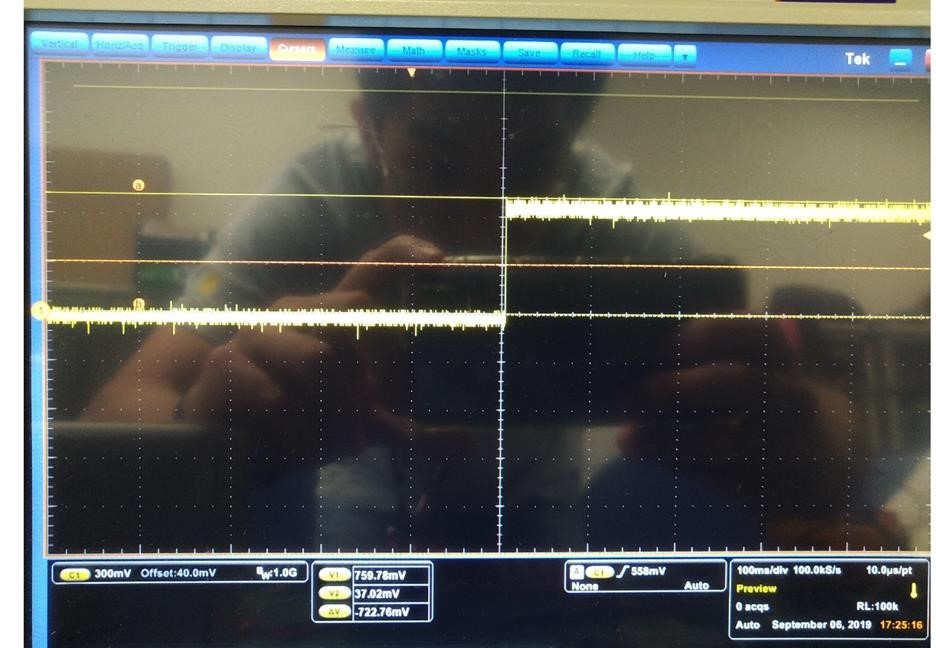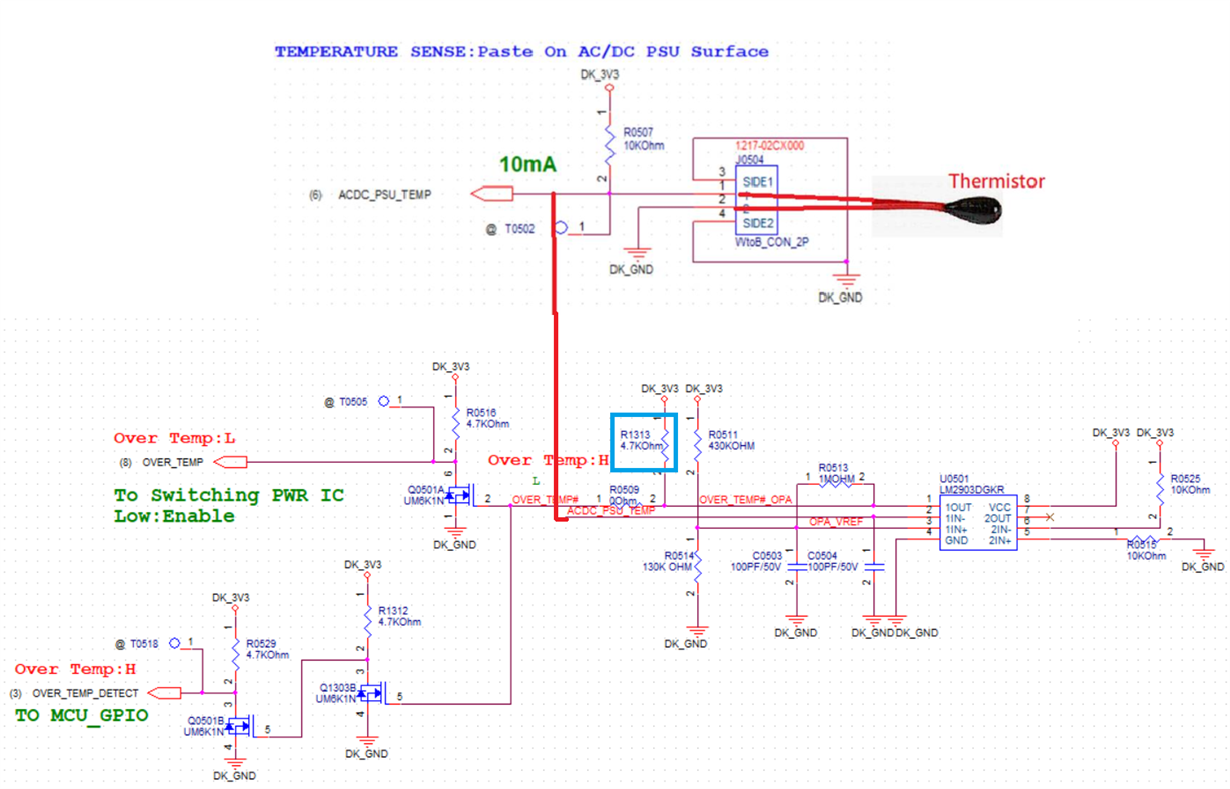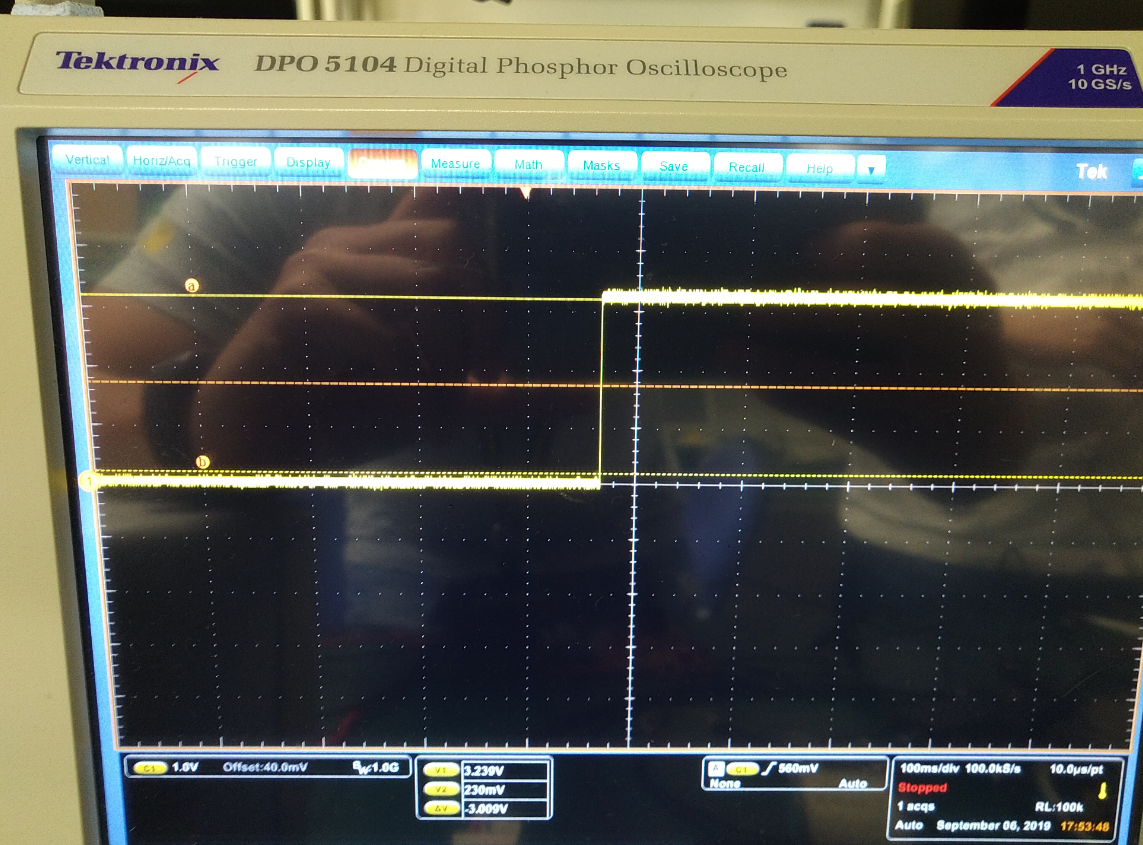Other Parts Discussed in Thread: TLV1701, TLV1702, TLV7041, TLV7031
Hi Sirs,
Sorry to bother you.
We measure the impedance of R0507 is 9.137Kohm.
We think that because it's paralle OUT of the OPA
The OPA out is the ideal voltage VCC.
So the direct measurement of the impedance of R0507 will be 10Kohm parallel (5.9Kohm with100Kohm) to calculate, get the impedance of 9.137Kohm? Am i wrong?
We also like to know are there other better design for us?


